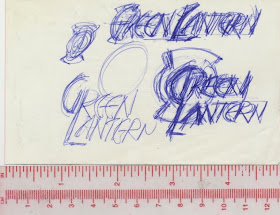The fiftieth anniversary of the interrobang, a punctuation mark created by Martin K. Speckter, is this year. Speckter was born June 14, 1915, according to the Social Security Death Index. The 1930 U.S Federal Census recorded the Speckter family in Omaha, Nebraska at 2533 North 16 Street. They had emigrated, from Russia, in 1921. He was the oldest of two children born to Morris and Ida; his father owned a grocery store.
In the mid-1930s, Speckter was a staff reporter for the Omaha World-Herald (Nebraska). On July 28, 1943, the World-Herald reported his army discharge.
Sgt. Martin Speckter, son of Mr. and Mrs. Morris Speckter, 2533 1/2 North Sixteenth street, received an honorable discharge from the army last week following several weeks of hospitalization resulting from an ailment which seriously affected his sight.
He was assigned to the army’s recruiting office at Richmond, Va., for more than a year following his preliminary training. Before entering the army, Speckter was employed as a newspaper reporter for The World-Herald and the McCook Gazette….
His upcoming wedding was noted in the December 3, 1944, World Herald.
Announcement is made by Henry Bank of the approaching marriage of his daughter, Miss Virginia Bank, to Martin K. Speckter, son of Mr. and Mrs. M.J. Speckter, on December 14. Miss Bank is associated with the Douglas County Chapter of the American Red Cross.
The World-Herald noted his move to Miami on November 1, 1946.
Bozell & Jacobs, Omaha Advertising agency, has opened a branch office in Miami, Fla., it was announced Thursday.
Martin K. Speckter, former World-Herald staff member, will be manager of the office. He will be assisted by Edward N. Green, another Omahan. Both men were in Army public relations during the war.
Mr. Speckter will go to his new assignment from the agency’s Los Angeles office.
Eventually, Speckter moved to New York City, where he created the interrobang. Its creation, acceptance and use was reported in the World-Herald.

World-Herald, May 27, 1962

World-Herald, June 23, 1967

World-Herald, May 28, 1971
On October 13, 1968, the Bridgeport Post (Connecticut) reported on the Remington typewriter version of the interrobang and its designer, Kenneth Wright. William Zinsser wrote a negative review of the interrobang in Life magazine, November 15, 1968.


Allan Haley wrote about the interrobang in Typeworld, June 1980, and x-height, Volume 3, Number 1, 1994 (the article can be read online at Font Haus.)

Typeworld
Speckter passed away February 14, 1988, according to the Social Security Death index; below is his February 16 obituary in the New York Times (the online version of the obituary does not have the interrobang).
Shady Characters has a two-part article on the interrobang; part 1and part 2. Images of Isbell's original art are at flickr; 1 and 2. An interview with Penny Speckter is here. The Freeborn Times celebrates "The Interrobang's Big 5-0." The BBC has a less than enthusiastic mention of the interrobang. A video on the interrobang is here.
Explained: Exclamation Point (The Interrobang makes an appearance.)
Related Posts
Interrobang, Part 1, Martin K. Speckter, Art Director
(Updated December 10, 2022. Next post on Wednesday: Michele Falanga, Frank Frazetta’s childhood art teacher)
Interrobang, Part 2: Jack Lipton, Designer and Art Director
Interrobang, Part 3: Larry Ottino, Lettering Artist, Designer and Art Director
Interrobang, Part 4: Joe Carter, Lettering Artist and Calligrapher
Interrobang, Part 5: Clarence Noel Johnson, Art Director
Interrobang, Part 6: Kenneth Wright, Graphic Designer
Interrobang, Part 3: Larry Ottino, Lettering Artist, Designer and Art Director
Interrobang, Part 4: Joe Carter, Lettering Artist and Calligrapher
Interrobang, Part 5: Clarence Noel Johnson, Art Director
Interrobang, Part 6: Kenneth Wright, Graphic Designer




































